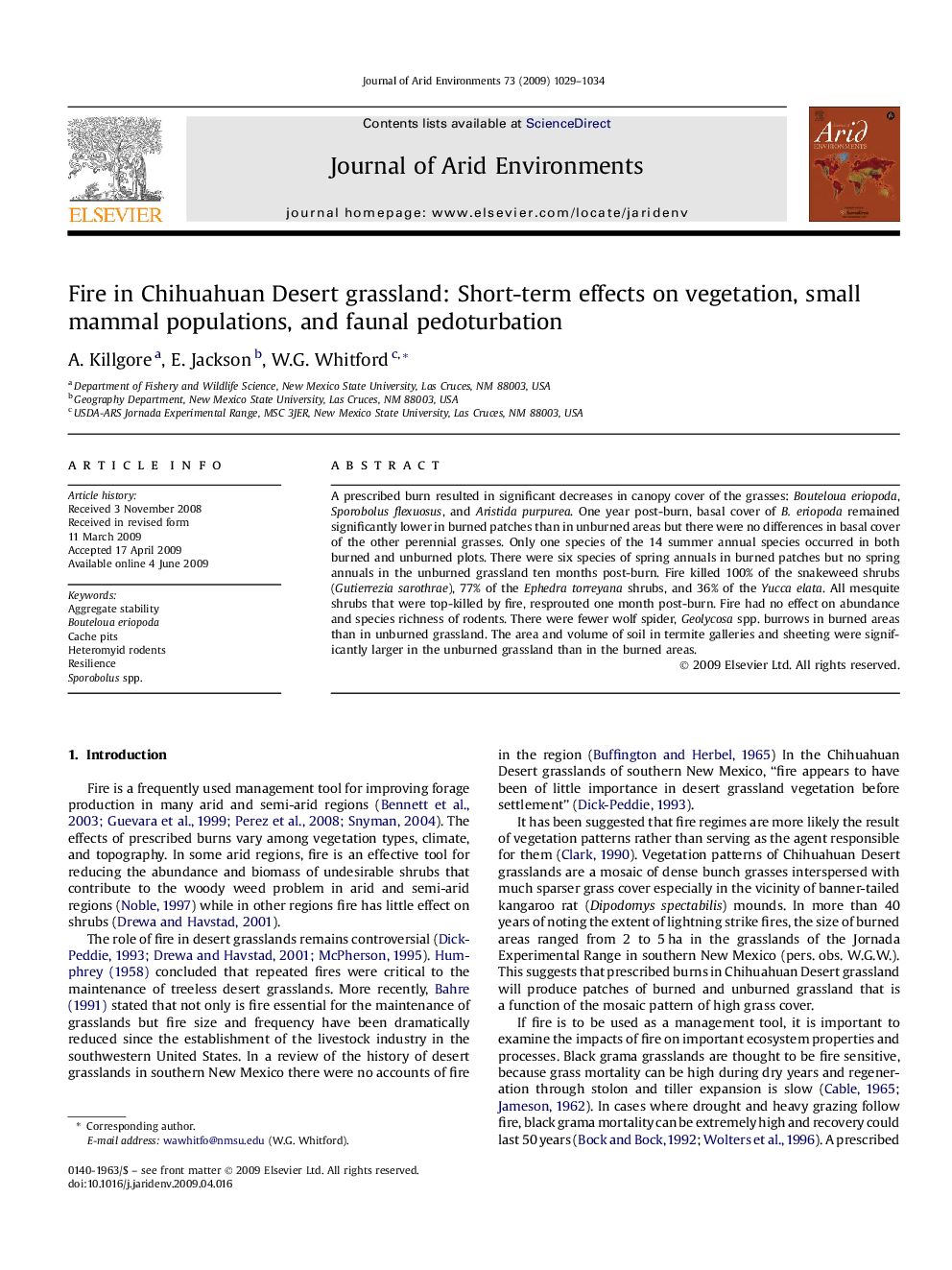| Article ID | Journal | Published Year | Pages | File Type |
|---|---|---|---|---|
| 4393731 | Journal of Arid Environments | 2009 | 6 Pages |
A prescribed burn resulted in significant decreases in canopy cover of the grasses: Bouteloua eriopoda, Sporobolus flexuosus, and Aristida purpurea. One year post-burn, basal cover of B. eriopoda remained significantly lower in burned patches than in unburned areas but there were no differences in basal cover of the other perennial grasses. Only one species of the 14 summer annual species occurred in both burned and unburned plots. There were six species of spring annuals in burned patches but no spring annuals in the unburned grassland ten months post-burn. Fire killed 100% of the snakeweed shrubs (Gutierrezia sarothrae), 77% of the Ephedra torreyana shrubs, and 36% of the Yucca elata. All mesquite shrubs that were top-killed by fire, resprouted one month post-burn. Fire had no effect on abundance and species richness of rodents. There were fewer wolf spider, Geolycosa spp. burrows in burned areas than in unburned grassland. The area and volume of soil in termite galleries and sheeting were significantly larger in the unburned grassland than in the burned areas.
